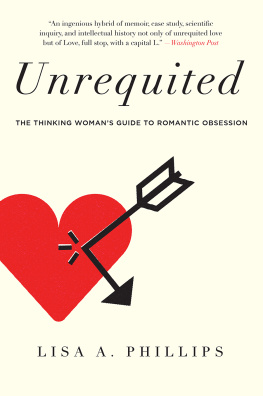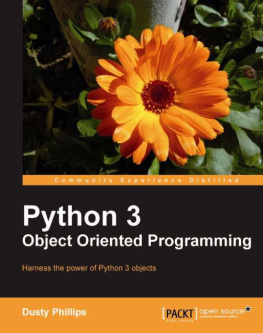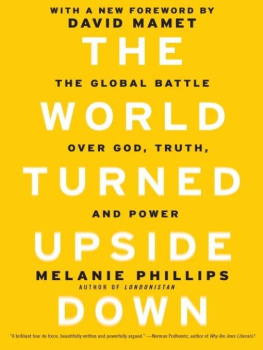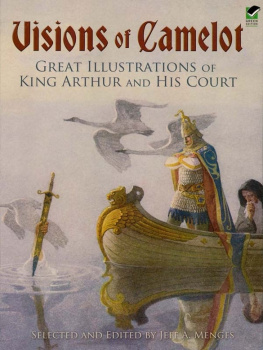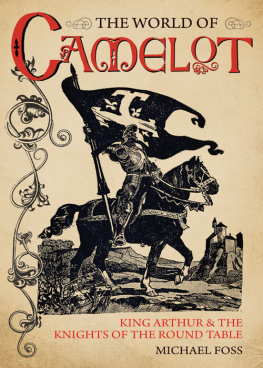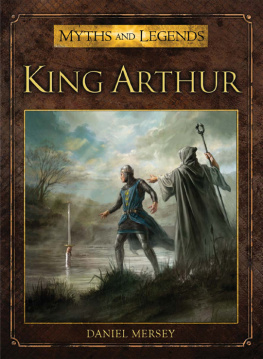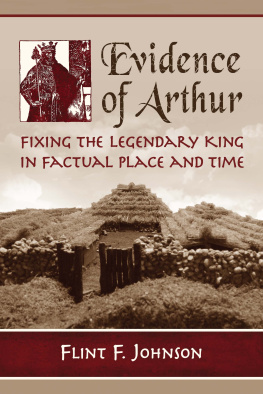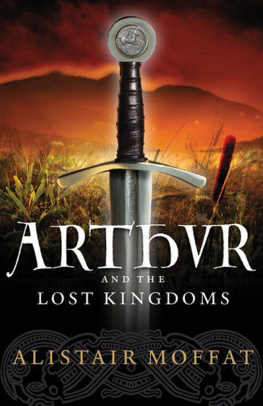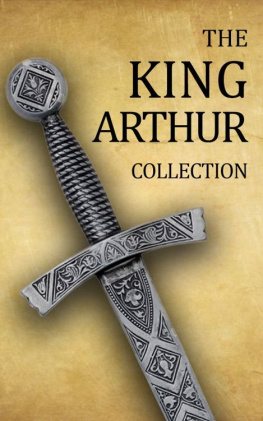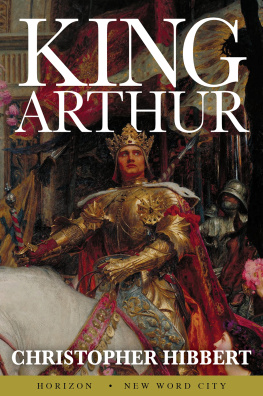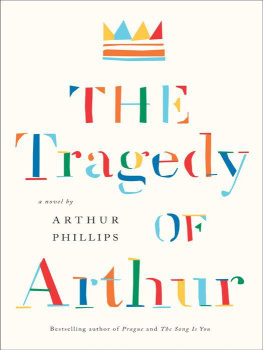
In loving memory of my sister Margaret
The
Lost Tomb
of
KING ARTHUR

Another must-read for anyone interested in the often inconvenient truth of history from the audacious and persuasive graham Phillips. This book will challenge much of what you think you know about Arthurbut in a good way!
LYNN PICKNETT, COAUTHOR OF THE TEMPLAR REVELATION AND TURIN SHROUD: IN WHOSE IMAGE? THE TRUTH BEHIND THE CENTURIES-LONG CONSPIRACY OF SILENCE
The history of King Arthur, and whether he truly existed, has been studied by many scholarly disciplinesit is an immense jigsaw puzzle. in this book, graham Phillips brings these pieces together to form a coherent picture of who the historical Arthur actually was. Always engaging and informative, this book penetrates the mystery of one of Englands iconic heritage figures.
STORM CONSTANTINE, AUTHOR OF THE MAGRAVANDIAS CHRONICLES
Just when you thought the legend of King Arthur was a fairytale, graham Phillips shatters the illusion with historical facts, discoveries, and theories that challenge everything you thought you knew about the once and future king. Compelling read for all questers of the truth.
ANDREW GOUGH, WRITER, PRESENTER, AND EDITOR OF THE HERETIC MAGAZINE
PRAISE FOR OTHER BOOKS
BY GRAHAM PHILLIPS
graham Phillips has always been noted for his meticulous historical research, depth of vision, and ability to follow the threads of a mystery throughout history.
NEW DAWN MAGAZINE
Of the many books out recently shedding new light on ancient history, this attempt to prove that the Bible is nearer historical truth than skeptics maintain is one of the best.
DAILY MAIL REVIEW OF ATLANTIS AND THE TEN PLAGUES OF EGYPT
Compelling evidence that the Knights Templar may have taken the Ark of the Covenant to the British isles.
THE GUARDIAN REVIEW OF THE TEMPLARS AND THE ARK OF THE COVENANT
Acknowledgments
The author would like to thank the following people for their invaluable help: Deborah Cartwright for the wonderful photography; Yvan Cartwright for compiling the index and for fantastic IT support; my researcher Maia Wille; Jodi Russell for extra research material; Sally Evans, Dave Moore, and Claire Silverman in helping with translations; and Jon Graham, Kelly Bowen, Mindy Branstetter, Jeanie Levitan, Manzanita Carpenter, and all the team at Inner Traditions.
INTRODUCTION
A Flesh-and-Blood Historical Figure
What follows is the full, untold story of my quest to do what no one had done before: to identify a real, living figure behind the legend of King Arthur and, ultimately, to discover his grave. When the book King Arthur: The True Story was published in 1992, which I coauthored with Martin Keatman, our claim to have discovered a historical King Arthur created something of a sensation. However, that book was originally intended as a comprehensive guide to the Arthurian legend in general, and only the final section included the last-minute identification of the man behind the King Arthur story, made shortly before the book went to press. As a second book was anticipated but never materialized, the true-life historical detective story leading to that discovery was never told. Since that time an astonishing body of evidence has accumulated to support this theory as to who King Arthur really was. I have brought to light formerly obscure manuscripts, initiated archaeological investigations, and have followed a trail of compelling historical clues. Although my continuing research into the King Arthur mystery has been featured in a variety of newspapers, magazines, and television documentaries over the years, none of it has previously been published or broadcast in anything but its barest outline. Now that I have finally located what I believe to be the historical King Arthurs grave, it is time for this book to be written.
Before I start I should probably explain whyeven before I began my search for King Arthur and his final resting placeI consider him to be worth serious consideration as a historical figure. The Arthurian story we know today is filled with themes and events that seem pure fantasy: magicians, witches, the supernatural, mythical beings, damsels in distress, and all the rest. These tales developed over many years, from the mid-twelfth century to the modern day, each retelling becoming more elaborate and fanciful. This King Arthur of the imaginationthe floaty man, as I once heard him jokingly describedis not the character I sought. Rather, I was looking for a flesh-and-blood, historical figure upon whom the legends might have been based. Before the romantic Arthurian stories of the Middle Ages were composed, there were earlier accounts portraying the now fabled king in a purely historical context, unfettered by such flights of fancy. One of the oldest such texts is found in a manuscript cataloged as Harleian MS 3859 in the British Library, London, which contains a work attributed to a ninth-century British monk called Nennius. Nenniuss The History of the Britonswhich dates from three centuries before the first of the unlikely Arthurian tales were composedpropounds that Arthur had been a powerful British leader who successfully fended off foreign invasions around the year AD 500. It records a number of episodes associated with Arthur, known from both earlier contemporary sources and through modern archaeology to have been genuine historical events. I will be examining Nennius and other such documentation at length, but for now it is important to stress that these sources, together with recent archaeological discoveries, make a compelling case for Arthurs existence.
Why then, you may be asking, do many historians and other scholars continue to doubt King Arthur was a real, historical figure? Well this is partly because when most people think of the Arthurian story, they recall the medieval and modern fanciful tales. Clearly King Arthur as he is depicted in these elaborate fictions did not exist. More significantly, however, from the academic perspective, no contemporary inscription or historical documentation, or any archaeological find from the period in question, has yet been uncovered bearing Arthurs name. But this, as I shall argue, is actually irrelevant. There are many historical figureswhose existence academics seldom questionwho also lack any surviving contemporary mention: Jesus Christ, to name just one. On the contrary, the latest literary and archaeological discoveries do far more to prove King Arthurs existence than they do to refute it. In this book I not only hope to persuade you that King Arthur was a historical figure, and that many themes in the Arthurian story were based on real events, but that I have discovered both his true Camelot and his long-forgotten tomb.
As I am writing this book for a general readership, I should also clarify a few points. First, concerning dating terminology: it is said that science books written for a popular readership should always avoid confusing mathematical equations (except Einsteins E = mc2). In the same spirit I will be keeping certain terms regarding historical periods simple to avoid confusion. Strictly speaking, the term medieval, from the Latin meaning Middle Ages, refers to the European period from the final collapse of the Roman Empire in Western Europe in 476 until the fall of Constantinople in 1453. No need to worry about these events or why they are significant at the moment. The important point is that today most people, when pondering British history, tend to think of the terms



